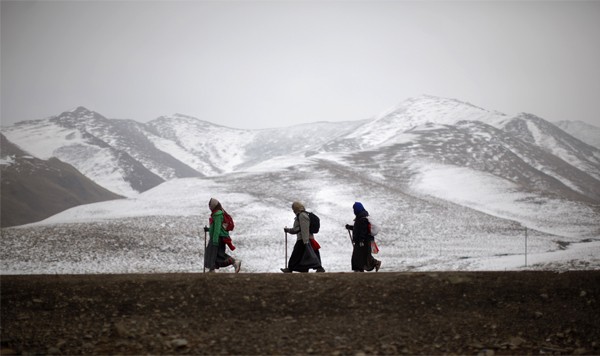The start of the Tibetan Buddhist New Year coincides with the Chinese New Year once every three years, and the concurrence of the Year of the Wooden Ram and the Year of the Yang (Sheep, Ram or Goat) on Thursday was cause for yet another major celebration.
The occasion registered throughout the world, with the Kagyu Samye Dzong Buddhist center in London highlighted in the international media.
During the 14 days leading up to New Year's Day, Tibetan Buddhists engage in a process of prayer to rid their lives of the negativity and hindrances from the previous year.
Purification rituals are also conducted in the closing days of the old year for the purpose of purifying the home environment as well as the physical body.
Then, the initial 15 days of the new year are of especial significance, as a celebration of the Buddha's miracles takes place after the new year is given a proper welcoming ceremony.
Elements that are good in nature and auspicious are invited into people's homes during the special new-year celebration period. A special Losar shrine is sometimes constructed in family homes, serving as a prominent symbol to display the family's wishes for generosity, peace and blessings during the forthcoming year.
In terms of food, numerous special Losar dishes can be served, including Tibetan sweet rice and a traditional treat called "gutu," which is like a Tibetan dumpling that is filled with ginseng, turnip and other ingredients.
For Tibetan Buddhist monks, food is not a foremost matter, as many undertake a fasting practice called "Nyungney" during the first 15 days of the new year.
However, monks in Tibet joined the rest of the population this year in the use of the WeChat social app, which is popular throughout the Qinghai-Tibet Plateau.



























